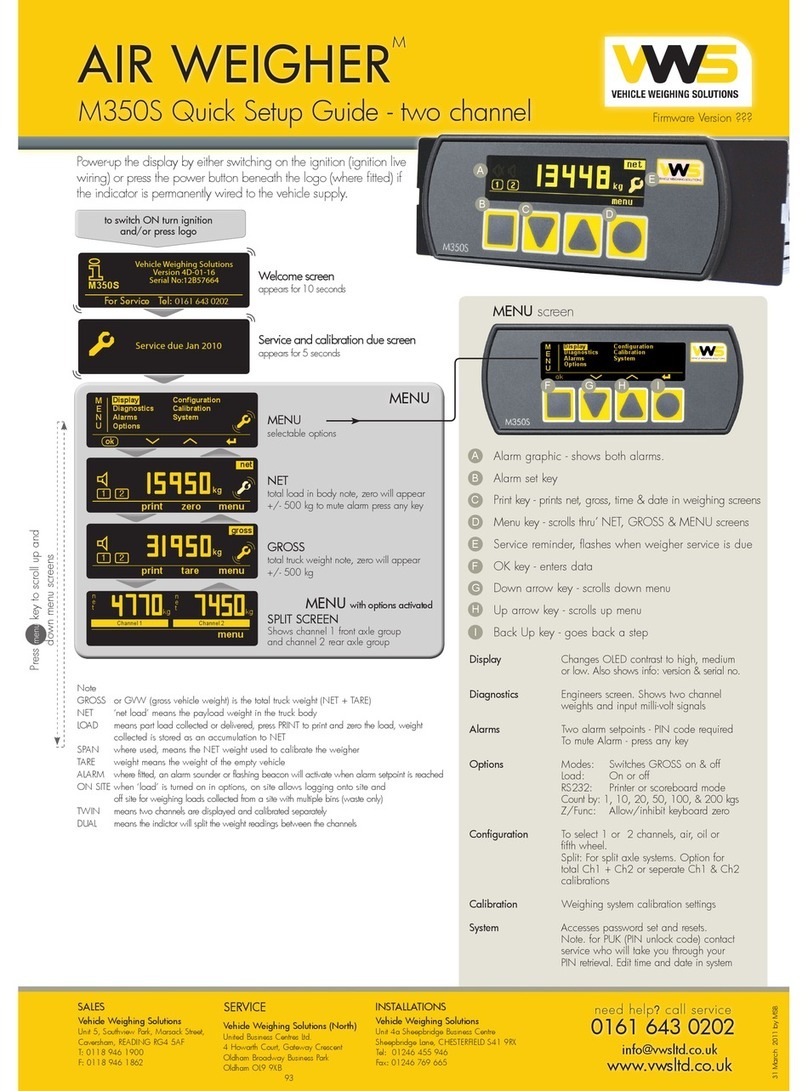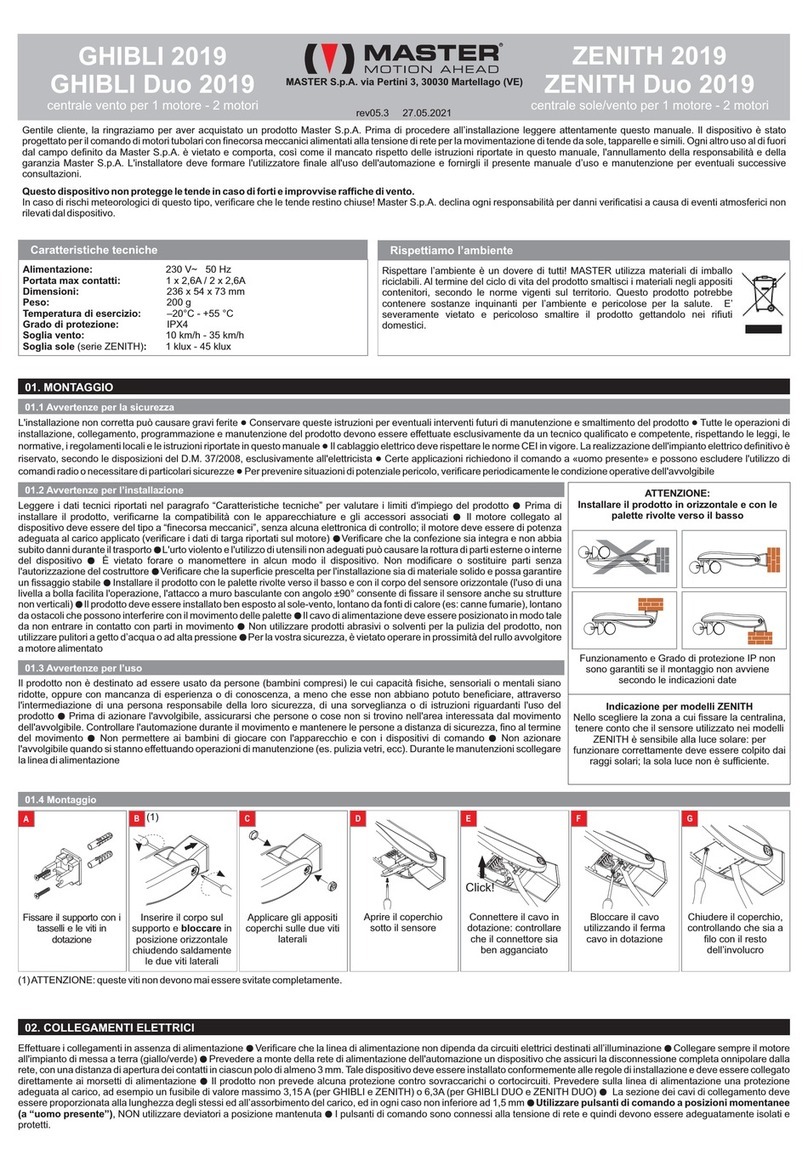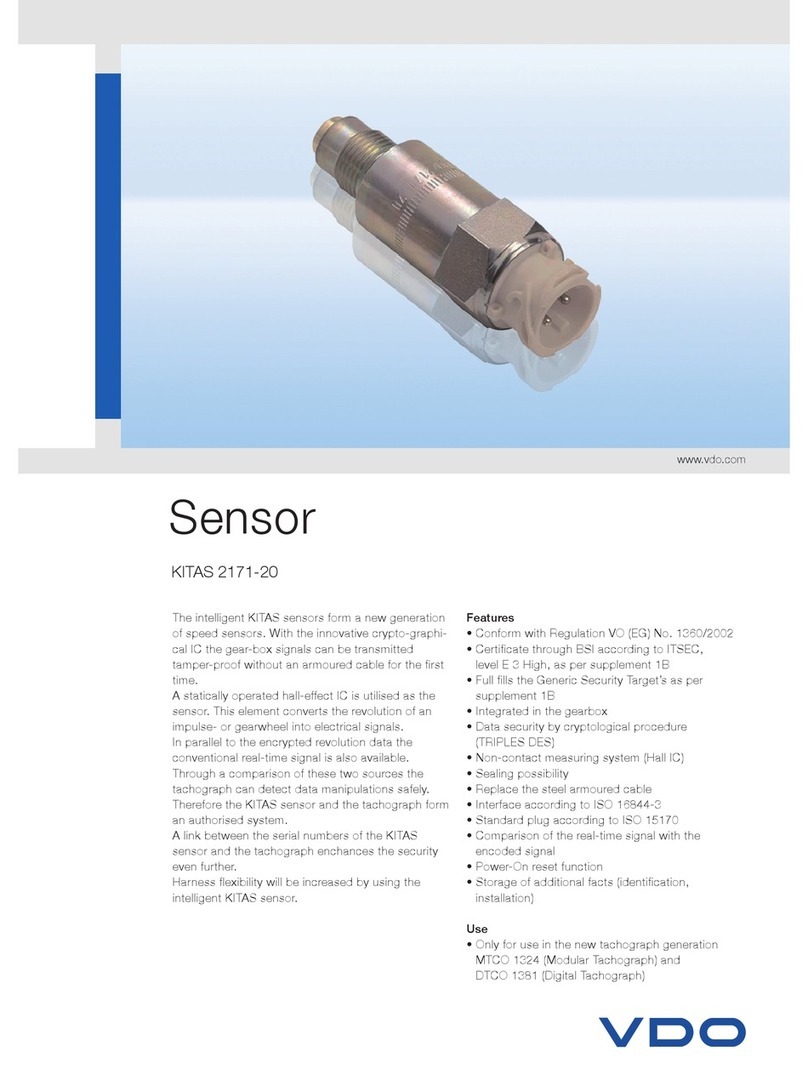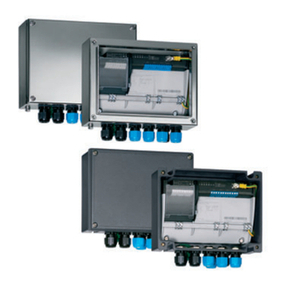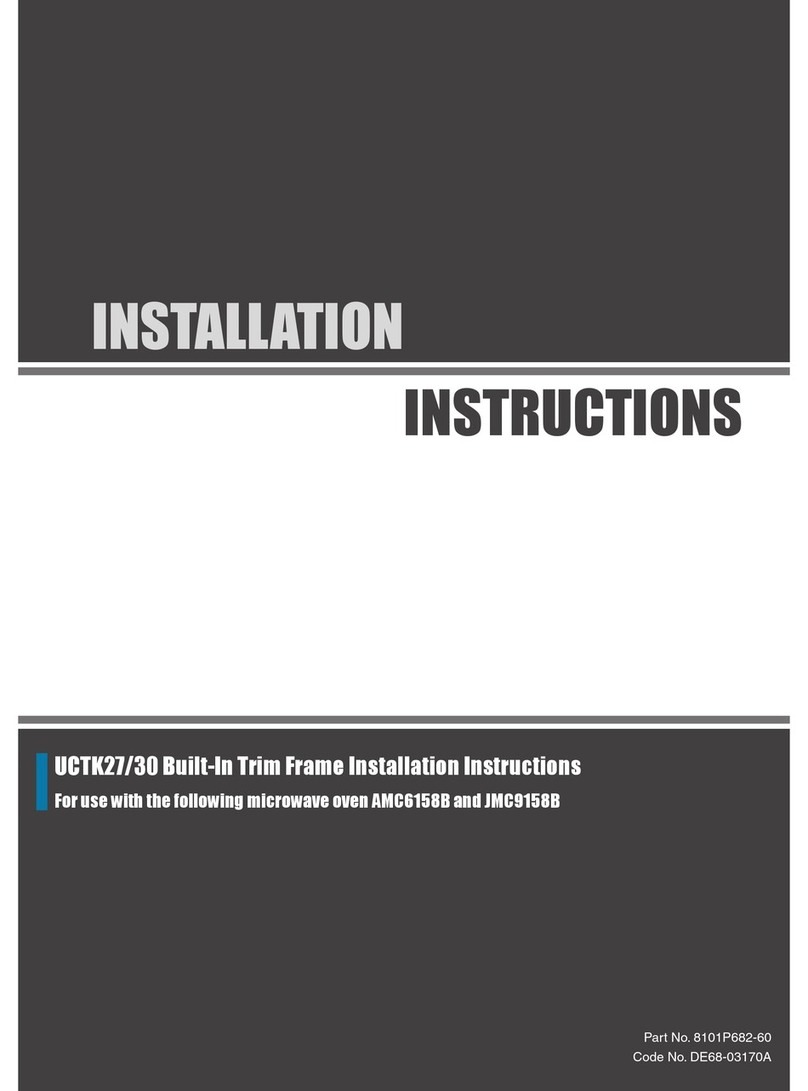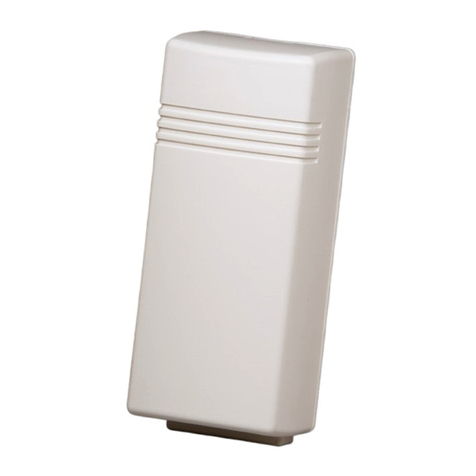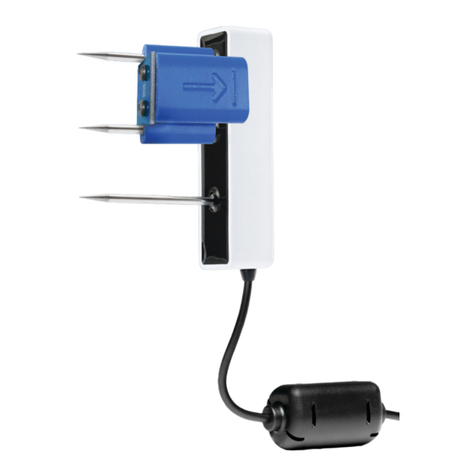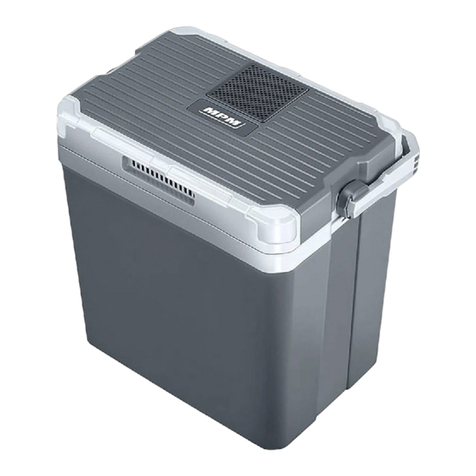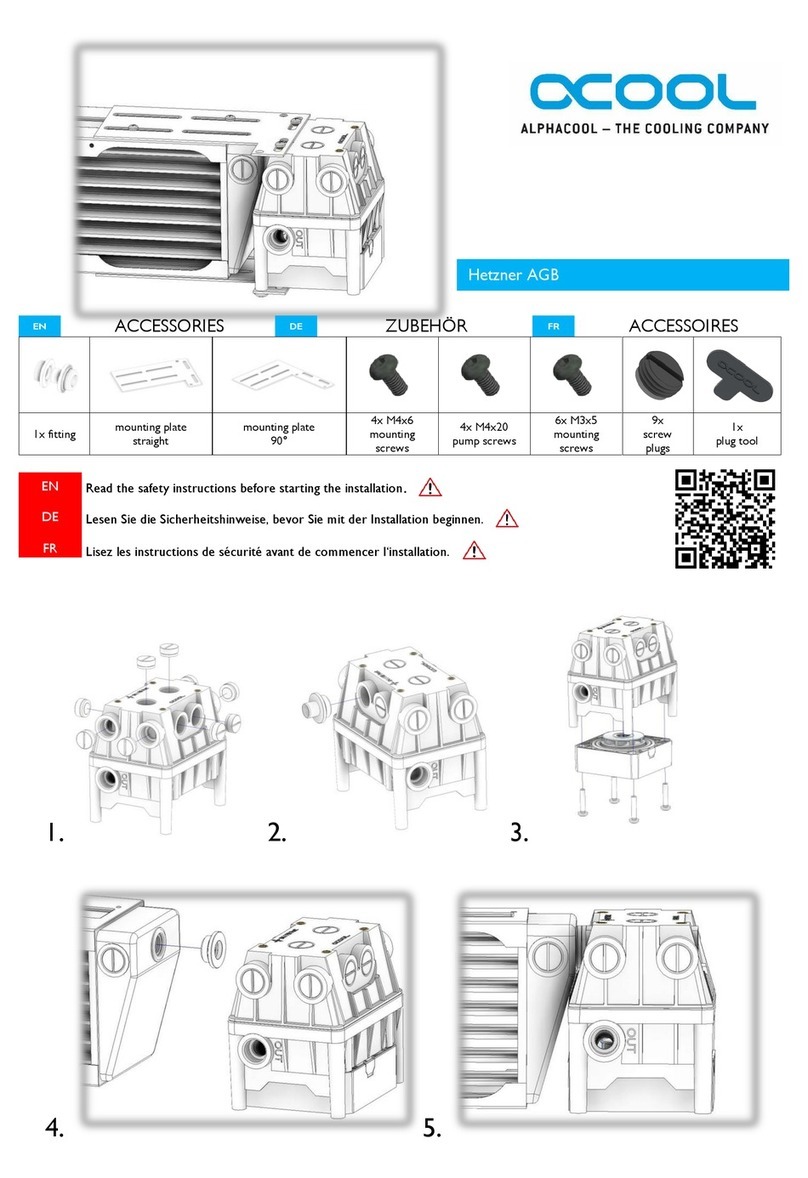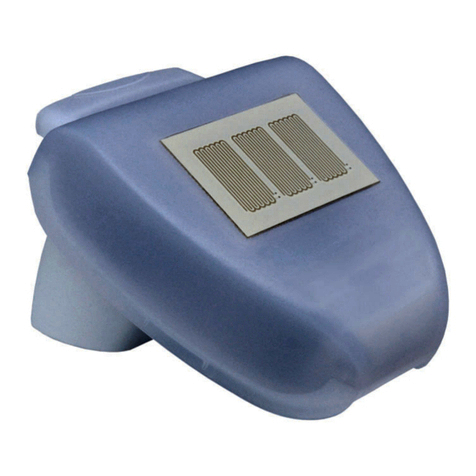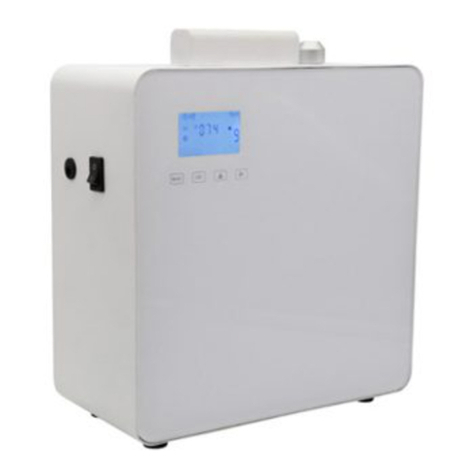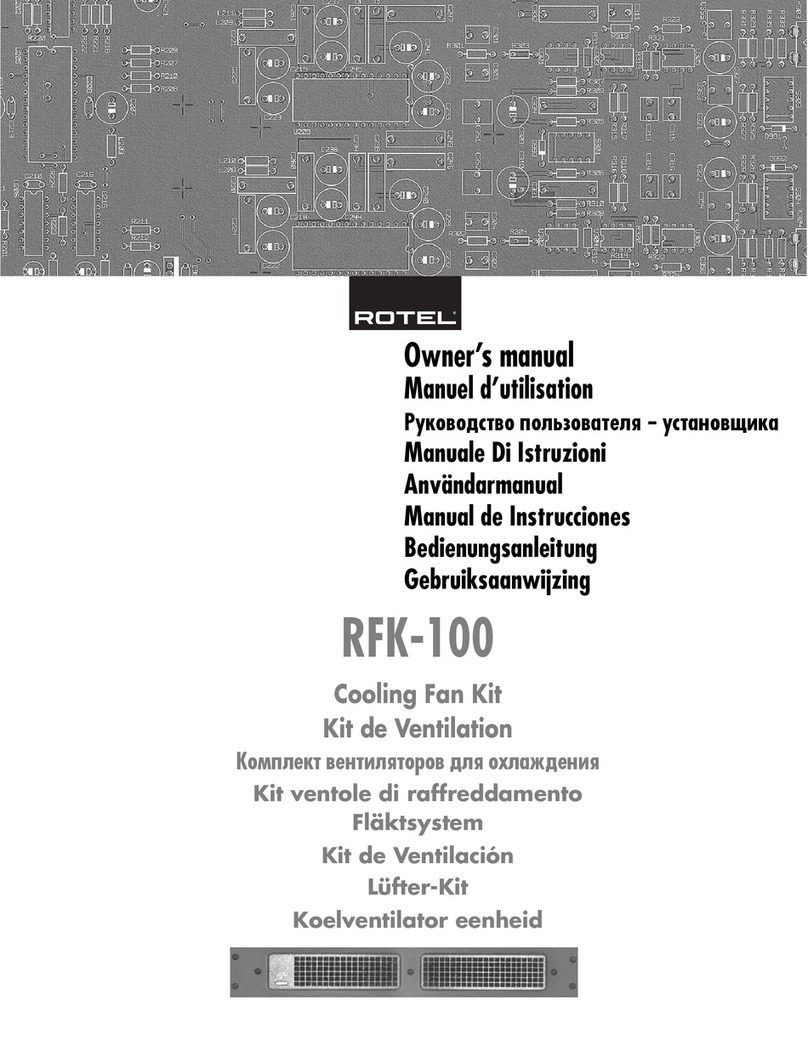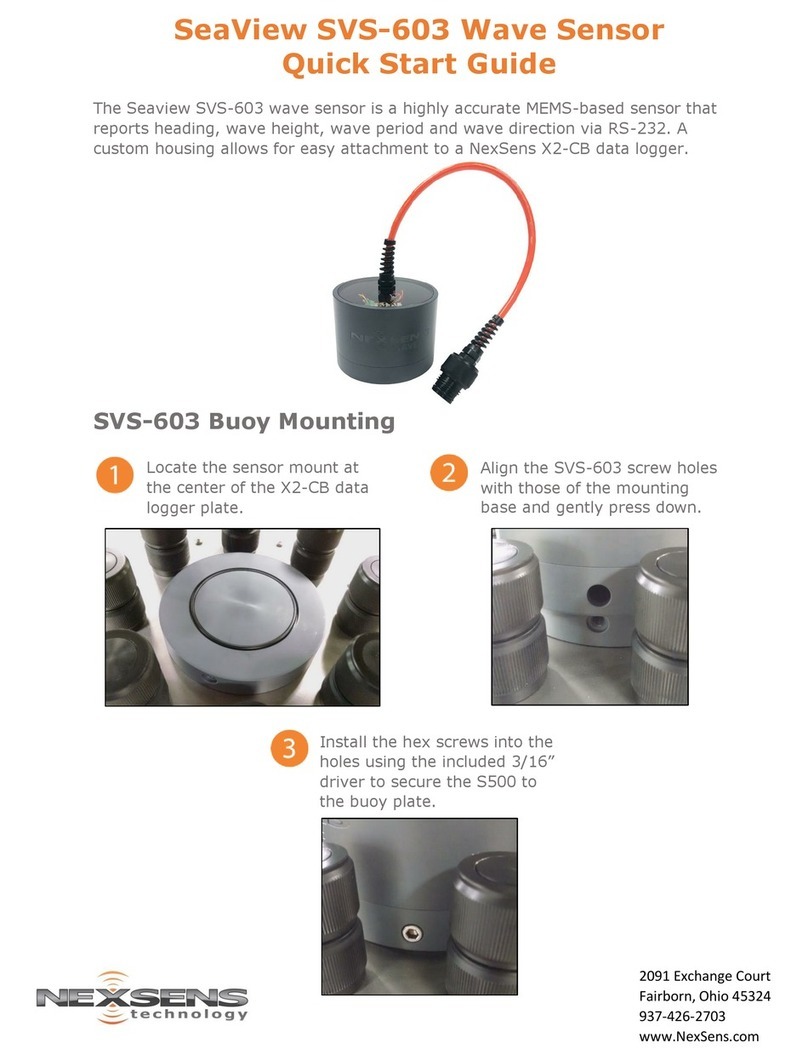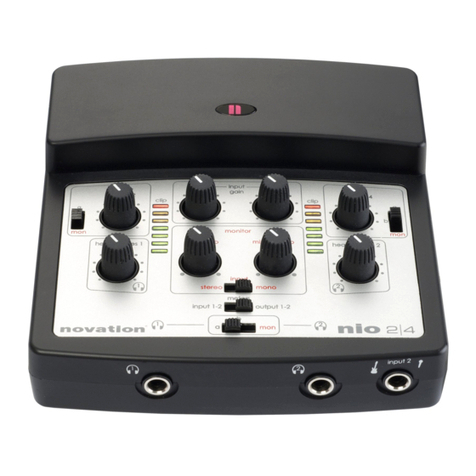Elemental Machines Element-B User manual

© 2022 Elemental Machines - 771-00032 rev 01 Element B, EB1 User Manual elementalmachines.com1/5
Safety Information
Batteries
Non-ionizing Radiation exposure
Protecting the Environment
Installation Guide
Element-B Installations Variants
Specifications
Certifications
United States FCC:
Canada IC:
Elemental Machines Sensory Network™ Security Overview
Local Communication
Communication through Customer Wi-Fi
Page 1
Page 1
Page 1
Page 1
Page 3
Page 3
Page 3
Page 4
Page 4
Page 4
Page 4
Page 4
Page 5
Element-B User Manual
Model EB1
Contents

© 2022 Elemental Machines - 771-00032 rev 01 Element B, EB1 User Manual elementalmachines.com2/5
Element-B User Manual
Introduction
This manual provides instructions on safety and installation of the Element-B (Model EB1) including information regarding security,
specifications and certifications.
Element-B (Model EB1) is a battery-operated wireless smart sensor that connects to a dry contact on an instrument, continuously
detecting if the instrument is reporting an open or a closed state. Element-B can be provided in normally-open or normally-closed
configurations, and includes a cable to interface with its assigned lab equipment. Data is securely transmitted wirelessly to the
Elemental Machines Insights Dashboard™ via the Elemental Machines Gateway, where it is recorded and analyzed for record keeping
and alerting.
Safety Information
Batteries
WARNING: Element-B, Model EB1 is powered by 2
non-rechargeable AAA lithium batteries. These batteries
can explode or leak and cause burns if installed backwards,
disassembled, charged, or exposed to water, fire, high tempera-
ture or rapid warming from extremely cold temperature.
For this reason it is important that the main housing of Element-B
does not exceed its operating limits in temperature of 5 to 45°C
and in humidity of 0 to 95%RH (non-condensing).
Non-ionizing Radiation exposure
Element-B sends measurements to a Gateway using a low-power
2.4GHz wireless network. When transmitting, the radio modules
inside the Element-B work at a maximum power of 4.8 dBm ≡
3mW for Model EB1. This level is not recognized as hazardous,
but several nations (e.g. Canada, Australia) advise not to use such
a device within 20cm of your body i.e. as a personal electronic
device without further precautionary testing.
This equipment has been tested and found to comply with the
USA’s (FCC) limits for a Class B digital device, which are designed
to provide reasonable protection against harmful interference
when the equipment is operated in a commercial environment. If
not installed and used in accordance with this User Manual, the
Element-B may possibly cause harmful interference to other
radio communications. Possible remedies for any such interfer-
ence include reorienting the receiving antennae or increasing the
separation between affected equipment and Element-B.
Model EB1
Protecting the Environment
Element-B is designed with consideration for the environment
and comply with relevant regulations such as the EU’s RoHS
regulations and Batteries Directive, as well as the USA’s EPA
initiative to ‘Reduce, Reuse, Recycle’. Element-B’s are provided to
customers to support the service Elemental Machines provides,
but they remain the property of Elemental Machines and should
be returned to EM at the end of their life for reuse, recycling or
disposal as appropriate. Elemental Machines relies on customers
to play their role in the process of disposing of Element-B’s
correctly, to help Elemental Machines in protecting the environ-
ment.
Element-B is marked with this symbol, the EU’s
‘wheeled bin’ symbol, to identify it as Electrical or
Electronic Equipment that the EU requires not to be
added to unsorted municipal waste when it has
reached the end of its life. The correct disposal is:
AAA lithium batteries that have reached the end of their life
should be removed from the Element-B, kept separate from
unsorted municipal waste and disposed of according to local
regulations (EU Non-hazardous Waste code: 16 06 04)
Element-B’s that have reached the end of their life should have
their batteries removed for disposal as above and then returned
to Elemental Machines (EU Non-hazardous Waste code 16 02 14)
When batteries need to be removed or replaced, remove the
battery cover on the back of the device and remove the two AAA
batteries; these can be replaced with new AAA lithium batteries

© 2022 Elemental Machines - 771-00032 rev 01 Element B, EB1 User Manual elementalmachines.com3/5
Element-B User Manual
Model EB1
Installation Guide
Below are the instructions for installing the Element-B. If you have any questions please contact [email protected].
Specifications
ELEMENT-B SPECIFICATIONS
Model Number
Dimensions
Operating Temperature Range
Operating Humidity Range
Battery Requirements
Battery Life
COMMUNICATION
Default Data Sample Rate
Range
Frequency band (power)
COMMUNICATION
Contains FCC ID
Contains IC ID
EB1
2.25 in x 1.6 in x 1.0 in (5.7 cm x 4.0 cm x 2.5 cm)
5 – 45 °C
0-95% RH, Non-condensing
2 AAA replaceable lithium batteries (supplied)
1 Year (13 months typical)
15 seconds
~10 0 f t (3 3m )
2.4 GHz (4.8 dBm ≡ 3mW)
TFB-1005, FCC Part 15.247
5969A-1005, RSS 247
Element-B Installation Variants
Since the Element-B has many variations for monitoring different
equipment, the installation guide shipped with your Element-B has
been selected as the one most suitable for your equipment and
the connection cable supplied to fit to it.
The most suitable Installation guide is included with your
Element-B as a printed copy. Digital versions of this Installation
guide, as well as others, are available in the Support section of the
Elemental Insights Dashboard™.

© 2022 Elemental Machines - 771-00032 rev 01 Element B, EB1 User Manual elementalmachines.com
4/5
Elemental Machines Sensory Network Security Overview
The Elemental Machines Sensory Network is designed to operate securely on our customers’ networks. The system includes Elements,
wireless devices that monitor critical equipment and/or the ambient environment, Elemental Gateways, which gather data from Elements,
and the Elemental Machines Insights Dashboard™.
Local Communication
Individual Elements communicate to a local Gateway via a low power 2.4GHz wireless communication, typically 4.8 dBm or lower power.
Only whitelisted devices can connect with the Gateway; the whitelist is populated prior to shipping and adjusted with any subsequent
additions to the network.
Element-B User Manual
Model EB1
Certifications
United States FCC:
This device complies with Part 15 of the FCC Rules. Operation is subject to the following two conditions:
(1) this device may not cause harmful interference, and (2) this device must accept any interference received, including interference that
may cause undesired operation.
This equipment has been tested and found to comply with the limits for a Class B digital device, pursuant to Part 15 of the FCC Rules.
These limits are designed to provide reasonable protection against harmful interference in a residential installation. This equipment
generates, uses and can radiate radio frequency energy and, if not installed and used in accordance with the instructions, may cause
harmful interference to radio communications. However, there is no guarantee that interference will not occur in a particular installation. If
this equipment does cause harmful interference to radio or television reception, which can be determined by turning the equipment off
and on, the user is encouraged to try to correct the interference by one of the following measures:
• Reorient or relocate the receiving antenna.
• Increase the separation between the equipment and receiver.
• Connect the equipment into an outlet on a circuit different from that to which the receiver is connected.
• Consult the dealer or an experienced radio/TV technician for help.
WARNING: Changes or modifications not expressly approved by Elemental Machines, Inc. could void the user’s authority to operate the
equipment.
Canada IC:
This equipment complies with Canada radiation exposure limits set forth for an uncontrolled environment. This equipment should be
installed and operated with minimum distance 20cm between the radiator & your body.
This device complies with Industry Canada licence exempt RSS standard(s). Operation is subject to the following two conditions: (1) this
device may not cause interference, and (2) this device must accept any interference, including interference that may cause undesired
operation of the device.
Cet équipement est conforme Canada limites d'exposition aux radiations dans un environnement non contrôlé. Cet équipement doit être
installé et utilisé à distance minimum de 20cm entre le radiateur et votre corps.
Le présent appareil est conforme aux CNR d'Industrie Canada applicables aux appareils radio exempts de licence. L'exploitation est
autorisée aux deux conditions suivantes: (1) l'appareil ne doit pas produire de brouillage, et (2) l'appareil doit accepter tout brouillage
radioélectrique subi, même si le brouillage est susceptible d'en compromettre le fonctionnement.

© 2022 Elemental Machines - 771-00032 rev 01 Element B, EB1 User Manual elementalmachines.com5/5
Communication through Customer Wi-Fi:
Transport Security
The system uses the established communication and security
standard, TLS, to protect data transmitted between Gateways and
the Elemental Insights Dashboard™. TLS is the web standard for
protecting sensitive data including usernames, passwords, credit
card, and banking information and it uses a combination of
asymmetric and symmetric cryptography unique for each connec-
tion to ensure security.
The Elemental Machines Sensory Network’s™ external communi-
cation is designed to work even in the strictest environments. The
communication uses an adaptive transport mechanism that is
designed to work well when confronted with proxy authorities,
firewalls, and antivirus software.
No inbound ports need to be opened. Security vulnerability using
the above configuration is prevented as follows:
1: Internet Communication over port 80, 123, and 443
2: Device must be able to transmit outward to the Internet on 443
3: Clients do not open inbound ports
4: There is no need to open the firewall to receive on port 80, 123,
or 443
5: There is no way for outside users to get into the user's network
6: We do not listen to any ports; this is the case even if the user
opens ports 80, 123, or 443 for receipt
Network Whitelist
Tablet Gateways opens connections through port 80, 123, and 443
of a customer's firewall, opening only outbound connections.
Elemental Gateways require the following outbound TCP connec-
tions to be open on your firewall for the system to work:
• *.elementalmachines.io:443, TCP – for sending data to the
dashboard
• s3.amazonaws.com:[80|443], TCP – various files
• *.awmdm.com:443, TCP – device management
• play.google.com:443, TCP – provisioning
• android.googleapis.com:443, TCP – provisioning
• android.clients.google.com:80, TCP – app management
• time.windows.com:123, UDP – time synchronization
• *.pubnub.com:443, TCP – secure IoT device messaging
• *.pubnub.net:443, TCP – secure IoT device messaging
• *.pndsn.com:443, TCP – secure IoT device messaging
• *.papertrailapp.com:443, TCP – log management
Gateway-2’s open connections through ports 80, 123, and 443 of a
customer's firewall, opening only outbound connections.
Gateway-2’s require the following outbound TCP and/or UDP
connections to be open on your firewall for the system to work:
1. *.elementalmachines.io:443, TCP – for sending data to the
Elemental Machines Insights Dashboard™
2. s3.amazonaws.com:[80|443], TCP – various files
3. *.balena-cloud.com:443, TCP – for device management
4. *.docker.com:443, TCP – for verified operating system images
5. *.docker.io:443, TCP – for verified operating system images
6. time.elementalmachines.io:123, UDP – for time synchronization
7. 8.8.8.8:443, TCP – for DNS resolution
Tablet Gateway Supplemental
Tablet Gateways are based on the Android technology and
therefore enjoy the security benefits of the Android Development
Network and Google. Sourced from the Security whitepaper from
Google, Android:
• Strives to prevent security issues from occurring through design
reviews, penetration testing and code audits
• Performs security reviews prior to releasing new versions of
Android and Google Play
• Publishes the source code for Android, thus allowing the
broader community to uncover flaws and contribute to making
Android the most secure mobile platform
• Works hard to minimize the impact of security issues with
features like the application sandbox Detects vulnerabilities and
security issues by regularly scanning Google Play applications
for malware, and removing them from devices if there’s a
potential for serious harm to the user devices or data
• Has a rapid response program in place to handle vulnerabilities
found in Android by working with hardware and carrier partners
to quickly resolve security issues and push security patches
Network Requirements:
Wireless Requirements:
• SSID: Not hidden
• Security: WEP, WPA, or WPA2
• IP Assignment: Dynamic Preferred
• Number of Unique Devices: Sum of all Gateways and other
Element-D/C/U devices¹
• Captive Portal: Not Supported
Element-B User Manual
Model EB1
This manual suits for next models
1
Table of contents
